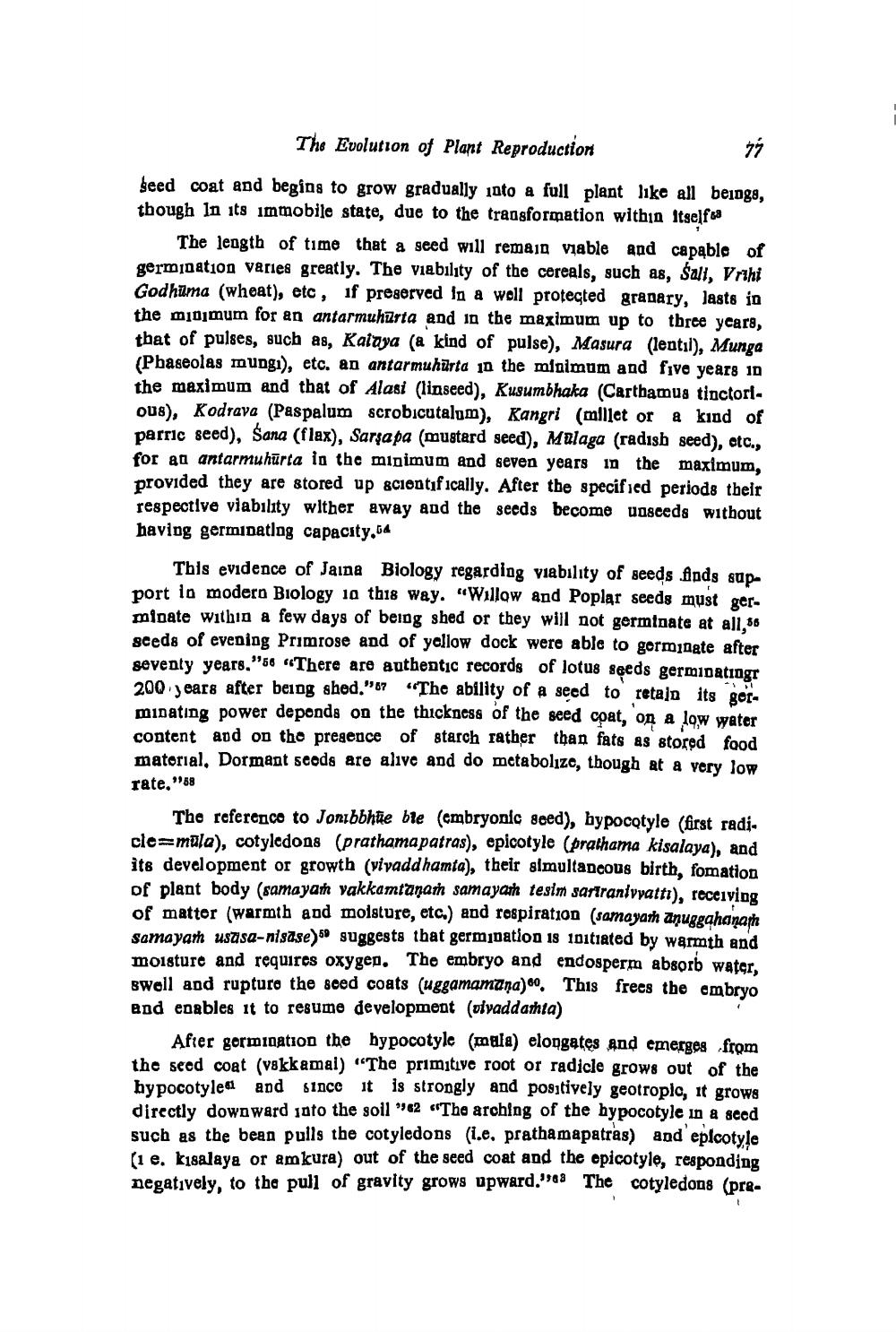________________
The Evolution of Plant Reproduction
77
seed coat and begins to grow gradually into a full plant like all beings, though in its immobile state, due to the transformation within itself
The length of time that a seed will remain viable and capable of germination varies greatly. The viability of the cereals, such as, Sali, Vrihi Godhuma (wheat), etc, if preserved in a well protected granary, lasts in the minimum for an antarmuhurta and in the maximum up to three years, that of pulses, such as, Kalaya (a kind of pulse), Masura (lentil), Munga (Phaseolas mungi), etc. an antarmuhurta in the minimum and five years in the maximum and that of Alasi (linseed), Kusumbhaka (Carthamus tinctorious), Kodrava (Paspalum scrobicutalum), Kangri (millet or a kind of parric seed), Sana (flax), Sarsapa (mustard seed), Malaga (radish seed), etc., for an antarmuhurta in the minimum and seven years in the maximum, provided they are stored up scientifically. After the specified periods their respective viability wither away and the seeds become unseeds without having germinating capacity,54
This evidence of Jaina Biology regarding viability of seeds finds support in modern Biology in this way. "Willow and Poplar seeds must germinate within a few days of being shed or they will not germinate at all,56 seeds of evening Primrose and of yellow dock were able to germinate after seventy years." "56 "There are authentic records of lotus seeds germinatingr 200 years after being shed." "The ability of a seed to retain its germinating power depends on the thickness of the seed coat, on a low water content and on the presence of starch rather than fats as stored food material, Dormant seeds are alive and do metabolize, though at a very low
- 2
rate, "58
The reference to Jonibbhue ble (embryonic seed), hypocotyle (first radicle mula), cotyledons (prathamapatras), epicotyle (prathama kisalaya), and its development or growth (vivadd hamta), their simultaneous birth, fomation of plant body (samayaṁ vakkamṭāṇaṁ samayam tesim sariranivvatti), receiving of matter (warmth and moisture, etc.) and respiration (samayam anuggahanath samayam usasa-nisase)" suggests that germination is initiated by warmth and moisture and requires oxygen. The embryo and endosperm absorb water, swell and rupture the seed coats (uggamamana). This frees the embryo and enables it to resume development (vivaddamta)
After germination the hypocotyle (mala) elongates and emerges from the seed coat (vakkamai) "The primitive root or radicle grows out of the hypocotyle and since it is strongly and positively geotropic, it grows directly downward into the soil "2 "The arching of the hypocotyle in a seed such as the bean pulls the cotyledons (1.e. prathamapatras) and epicotyle (1 e. kısalaya or amkura) out of the seed coat and the epicotyle, responding negatively, to the pull of gravity grows upward." The cotyledons (pra
t




